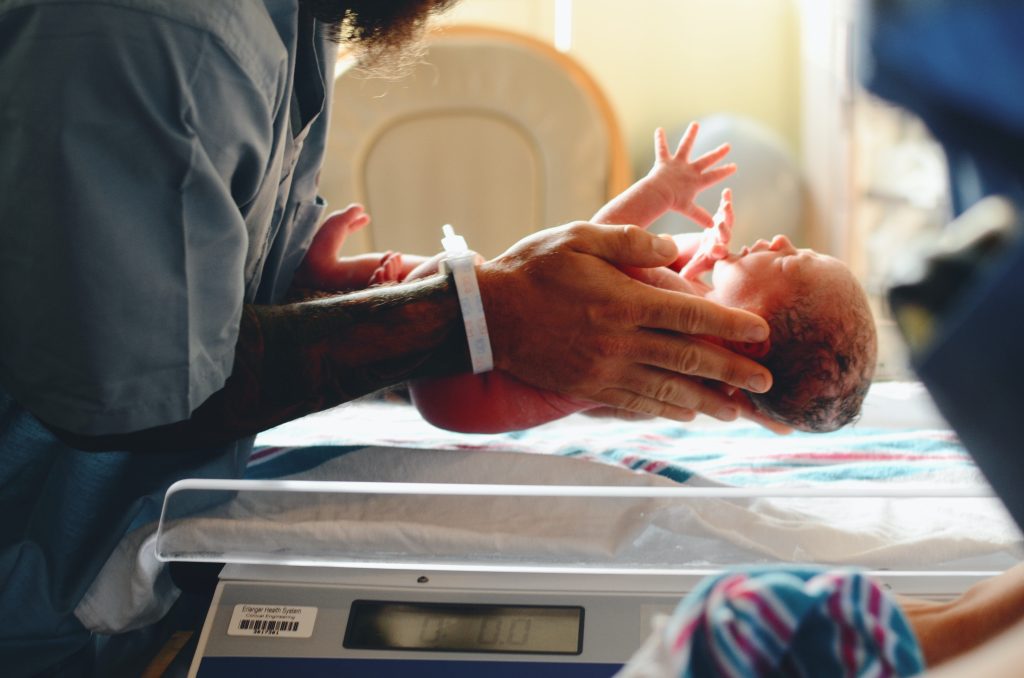How Does a Brachial Plexus Injury Occur?
Brachial plexus is a condition resulting from damage to a network of nerves in the neck. This network extends from the shoulder to the arm and hand. The brachial plexus controls movement and sensation in the shoulder, arm, and hand.
Injury to the brachial plexus can occur when the nerves are stretched, compressed, torn, or even pulled out from the spinal cord. Brachial plexus injuries resulting from medical negligence can result in devastating lifelong disabilities. These tragic injuries occur in about 1-3 out of every 1,000 births.
If your child suffered a brachial plexus injury during childbirth, Magna Law is here to help. Call our team at (763) 438-3032 to speak with a brachial plexus injury attorney.
What is the brachial plexus?
The brachial plexus is a network of nerves in the lower neck. This plexus, or network, provides motor and sensory innervation to the chest, shoulder, arm, forearm, and hand. It is essential for upper limb movement and sensation, enabling functions such as lifting, gripping, and fine hand movements.
More from Magna Law: What To Do If Your Child Was Injured During Birth
FREE CASE EVALUATION
Brachial Plexus Injury Lawyer in Minneapolis, MN
FREE CASE EVALUATION
How Does a Brachial Plexus Injury Occur?
Brachial plexus is a condition resulting from damage to a network of nerves in the neck. This network extends from the shoulder to the arm and hand. The brachial plexus controls movement and sensation in the shoulder, arm, and hand.
Injury to the brachial plexus can occur when the nerves are stretched, compressed, torn, or even pulled out from the spinal cord. Brachial plexus injuries resulting from medical negligence can result in devastating lifelong disabilities. These tragic injuries occur in about 1-3 out of every 1,000 births.
If your child suffered a brachial plexus injury during childbirth, Magna Law is here to help. Call our team at (763) 438-3032 to speak with a brachial plexus injury attorney.
What is the brachial plexus?
The brachial plexus is a network of nerves in the lower neck. This plexus, or network, provides motor and sensory innervation to the chest, shoulder, arm, forearm, and hand. It is essential for upper limb movement and sensation, enabling functions such as lifting, gripping, and fine hand movements.
More from Magna Law: What To Do If Your Child Was Injured During Birth
Medical Malpractice Lawsuits for Brachial Plexus
Brachial plexus injuries can result from medical negligence. This is when a medical provider fails to provide sufficient care, resulting in injury to the baby. A brachial plexus injury lawyer will be able to determine if you have a malpractice case.
Just as there are several types of brachial plexus injuries, there are many ways medical negligence can occur. Some examples of medical negligence include:
Neglecting to Evaluate Risks.
Physicians are responsible for identifying risk factors in all expectant mothers. This includes gestational diabetes, the presence of a large baby (fetal macrosomia), or a history of complicated deliveries. Overlooking these considerations during labor and delivery can result in brachial plexus injury, as well as shoulder dystocia, hypoxic-ischemic encephalopathy, and cerebral palsy.
Incorrect Application of Delivery Instruments.
Improper use of forceps or vacuum extractors can result in permanent damage to the brachial plexus. Injuries from these tools may result in lifelong conditions. This includes brachial plexus injuries, as well as brain damage, cerebral palsy, and permanent scarring.

Did Not Diagnose or Act Quickly.
Failure to promptly identify and address brachial plexus injuries can lead to serious complications. Often, anticipating difficulties and carefully guiding the baby’s head through the birth canal can help prevent these injuries.
Use of Excessive Force.
Even brief lapses in clinical judgment can heighten the risk of birth injuries. Applying too much force during delivery may cause brachial plexus injuries, nerve damage, or bone fractures. This is a tragically common type of hospital mistake, affecting roughly 7 in 1,000 babies.
Brachial Plexus Injury? You May Be Entitled To Compensation
If your child’s brachial plexus injury was the result of medical malpractice, a birth injury attorney can assist you in pursuing compensation for the harm suffered by both you and your child. You may be eligible to recover damages for several categories of loss, including:
Medical Expenses.
Compensation for medical expenses includes both immediate and ongoing costs related to the injury, such as surgeries, medications, physical therapy, and the purchase of specialized equipment like wheelchairs or orthotic devices. This coverage can also extend to anticipated future medical needs, including advanced treatments and continued rehabilitation.
Lost Wages/Loss of Earning Capacity.
Parents who must reduce their work hours or leave their jobs to care for a child with a birth injury may seek compensation for lost income. This encompasses not only current wage loss but also the long-term financial impact that caregiving responsibilities can have on the family.
Pain and Suffering.
Non-economic damages are available for the pain and suffering endured by both the child and their family. Emotional distress, trauma, and physical pain caused by the injury are all collectible in personal injury lawsuits.
Additional Expenses Resulting from Injury.
Families can seek compensation for future expenses related to long-term care. This includes home modifications, assistive devices, or the need for live-in care. These projected costs are determined based on expert assessments of the child’s lifetime needs.
If you believe that medical malpractice caused your child’s brachial plexus, speak to a birth injury lawyer as soon as possible. Call Magna Law today for a free case review.
Did You Know?
Minnesota has no caps on damages in medical malpractice lawsuits. In simple terms, this means that you have a legal right to compensation. This can include your child’s medical bills, pain and suffering, and loss of future earning capacity. To speak with a birth injury attorney about your case, call Magna Law at (763) 438-3032.
Why Choose Magna Law, Minnesota’s Brachial Plexus Injury Lawyers?
For brachial plexus birth injuries, Minnesota turns to Magna Law. Unlike other law firms that dabble in birth injury cases, we specialize in representing families affected by shoulder dystocia, birth asphyxia, Erb’s palsy, and more. Our legal team possesses a seasoned understanding of these complex cases and how to handle them effectively.
The team at Magna Law offers:
- Free consultations to evaluate your brachial plexus claim.
- Contingency fee arrangements, meaning you never pay anything until we successfully resolve your case.
- Compassionate support as you adjust to life after a serious birth injury, so you can focus on your family and your child’s recovery.
Call Magna Law today at (763) 438-3032 for your free consultation. After a brachial plexus injury, don’t leave your child’s financial recovery to chance.

You Have Four (4) Years To File a Brachial Plexus Claim in Minnesota
In Minnesota, parents generally have four (4) years to file a malpractice claim against the negligent party. When filing on behalf of an injured child, the statute of limitations can sometimes extend until the child reaches 18 years old. Speak to a brachial plexus injury lawyer as soon as possible to make sure these deadlines are met.
Read More from Magna Law: Filing a Medical Malpractice Claim for Birth Injuries: What You Need To Know
Frequently Asked Questions About Brachial Plexus Injuries
The brachial plexus is a complex network of nerves that originates from the spinal cord in the neck (specifically from the nerve roots C5 through T1) and extends through the shoulder into the arm and hand. This network is responsible for movement and sensation in the shoulder, arm, forearm, and hand. The brachial plexus allows you to perform a wide range of actions, from lifting your arm and rotating your shoulder to feeling touch and temperature in your fingers.
A brachial plexus injury occurs when these nerves are stretched, compressed, or torn, disrupting the communication between the spinal cord and the arm or hand. Such injuries can result from trauma, such as medical negligence. It may cause symptoms like pain, weakness, numbness, or even paralysis in the affected limb. Many brachial plexus injuries occur during childbirth as a result of neonatal medical malpractice.
The severity of a brachial plexus injury can range from mild, where nerves are only stretched and may recover on their own, to severe, where nerves are completely torn or avulsed from the spinal cord, potentially leading to permanent loss of function if not treated promptly.
Brachial plexus injuries in newborns can pose several risks, from mild weakness to significant, long-term disability. When the brachial plexus nerves are stretched, compressed, or torn during a difficult delivery, the infant may be injured. This can result in a loss of movement, weakness, or even paralysis in the affected arm, wrist, or hand. The injury may affect the upper arm (known as Erb’s palsy) or both the lower arm and hand (Klumpke palsy).
Severe brachial plexus injuries can lead to lifelong complications. These may include permanent weakness, loss of sensation, or total paralysis of the arm. Some babies may develop contractures, where the muscles tighten permanently, further restricting movement. In the most serious cases, if the nerves are completely torn from the spinal cord, the child may face chronic pain, limited use of the limb, and an increased risk for secondary injuries such as burns or cuts due to lack of sensation.
Additionally, long-term effects can affect the development of the shoulder joint and overall arm growth, sometimes requiring ongoing medical intervention, therapy, or surgery to maximize function and quality of life. This can lead to physical deformity, lower earning potential, and difficulty performing daily activities.
Managing the risk of brachial plexus injury centers on careful handling and the use of specific maneuvers. The primary goal is to avoid excessive force or aggressive traction on the baby’s head and neck; this can stretch or tear the brachial plexus nerves. Excessive force can result in shoulder dystocia as well as brachial plexus injury in infants.
Responsible medical professionals will follow obstetric guidelines to prevent birth injury. One such guideline is the McRoberts maneuver, which involves flexing the mother’s hips and bringing her knees toward her chest to widen the pelvic outlet and help free the baby’s shoulder. Delivery of the posterior arm is another recommended maneuver; this has been shown to result in the least amount of brachial plexus stretch and can often resolve the situation within minutes.
Your healthcare provider should institute proper training and simulation practice to improve their clinicians’ confidence during high-pressure situations. Your medical staff should be on alert for high-risk factors, including large infant size, maternal diabetes, or a history of difficult deliveries. Using evidence-based techniques and responding promptly to fetal distress can minimize the likelihood of nerve injury at childbirth.
Yes, brachial plexus injuries can often be prevented. Through careful management during labor and delivery, especially in situations where risk factors are present, obstetricians can recognize circumstances that increase the likelihood of injury and take care not to injure the child during their journey down the birth canal. Large baby size (macrosomia), maternal diabetes, and/or a history of difficult births are all warning signs that medical staff should heed when attending to a labor and delivery.
Healthcare providers can take several proactive measures to prevent brachial plexus injuries, including planning a cesarean section to avoid complications altogether. (During vaginal deliveries, the McRoberts maneuver and delivery of the posterior arm are just two of the ways to minimize risk.
The use of forceps or vacuum extractors increases the risk of brachial plexus injury, so their use is best left as a last resort. Excessive force during delivery can directly cause brachial plexus injuries. By anticipating and managing risk factors, medical professionals can significantly reduce the chances of brachial plexus injury in newborns.
